How to Maintain and Clean Wicker Patio Furniture
Wicker patio furniture adds a touch of elegance and comfort to any outdoor space. However, to keep it looking its best, regular cleaning and proper maintenance are essential. This guide will walk you through the best practices maintain and clean wicker patio furniture, ensuring it remains a beautiful part of your patio for years to come.
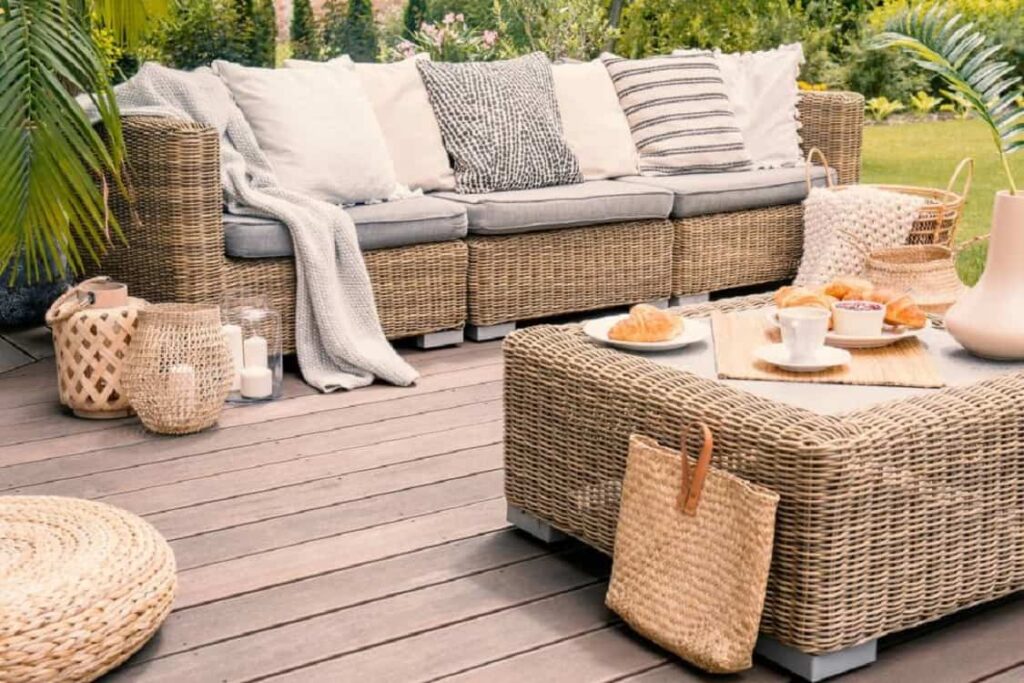
Cleaning Tips
Maintaining the cleanliness of your wicker patio furniture is crucial to preserve its beauty and durability. Here are some essential tips to help you keep your furniture in top condition.
Routine Cleaning
Routine cleaning is the foundation of maintaining your wicker furniture. It prevents dirt buildup and extends the lifespan of your pieces.
- Dusting: Regularly dust your wicker furniture with a soft cloth or a feather duster to remove loose dirt and debris. This simple step can significantly reduce the accumulation of dirt in the crevices.
- Vacuuming: Use a vacuum cleaner with a brush attachment to clean hard-to-reach areas. This method is particularly effective for removing dust from intricate wicker patterns.
- Washing: Mix a mild detergent with warm water and use a soft brush or sponge to gently scrub the surface. Avoid using too much water, as excessive moisture can damage the wicker. Rinse with a damp cloth and let it air dry completely.

Additional Tips for Routine Cleaning
- Frequency: Aim to dust and vacuum your wicker furniture at least once a week, especially if it is placed in an area with high foot traffic or exposure to outdoor elements.
- Spot Cleaning: For minor spills or stains, immediately blot the area with a clean cloth and apply a mild soap solution. This prevents the stain from setting and becoming more challenging to remove later.
- Avoid Harsh Chemicals: Always use gentle cleaning products to avoid damaging the natural fibers of the wicker. Harsh chemicals can cause discoloration and weaken the material over time.
Deep Cleaning
Deep cleaning should be performed periodically to address stubborn stains and deeply embedded dirt. Follow these steps for a thorough clean.
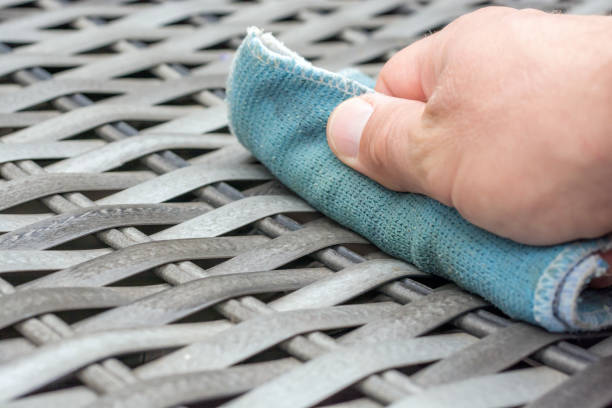
- Inspect and Prepare: Before deep cleaning, inspect your wicker furniture for any loose strands or damage. Address these issues to prevent further deterioration during cleaning.
- Cleaning Solution: Prepare a solution of warm water and mild detergent. For natural wicker, you can also add a small amount of white vinegar to the mix.
- Scrubbing: Use a soft brush to scrub the wicker, focusing on areas with built-up dirt or stains. Be gentle to avoid damaging the fibers.
- Rinsing: Wipe down the furniture with a clean, damp cloth to remove any soap residue. Ensure you don’t soak the wicker, as excessive moisture can lead to mold and mildew growth.
- Drying: Allow the furniture to air dry completely in a well-ventilated area. Avoid direct sunlight, as it can cause the wicker to become brittle over time.
Additional Tips for Deep Cleaning
- Frequency: Perform a deep clean at least once or twice a year, depending on the exposure and usage of your wicker furniture.
- Stubborn Stains: For tough stains, create a paste using baking soda and water. Apply it to the stained area, let it sit for a few minutes, and then gently scrub with a soft brush.
- Preventive Measures: To minimize the need for frequent deep cleaning, use furniture covers and cushions. These additions can protect the wicker from direct contact with dirt and spills.
Maintenance Tips
Proper maintenance is key to extending the life of your wicker patio furniture. Implement these practices to keep your pieces in excellent condition.
Protecting from Weather Elements
Exposure to various weather conditions can significantly impact the durability of your wicker furniture. Here’s how to protect it from the elements.
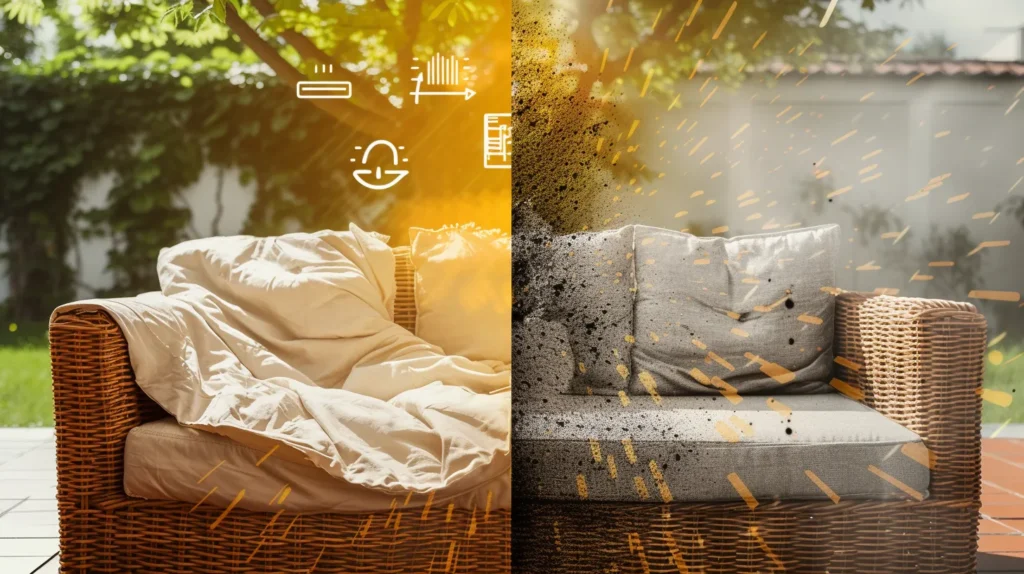
- Covers: Invest in high-quality furniture covers to shield your wicker from rain, snow, and excessive sunlight. Ensure the covers are breathable to prevent moisture buildup.
- Shade: Place your wicker furniture in a shaded area to reduce exposure to direct sunlight. This prevents the fibers from drying out and becoming brittle.
- Rain Protection: If your furniture gets wet, wipe it down promptly and allow it to dry completely to prevent mold and mildew growth.
Additional Tips for Weather Protection
- Seasonal Adjustments: Adjust the placement of your furniture according to the season. In summer, provide ample shade, while in winter, move it to a more sheltered area.
- Waterproof Covers: Use waterproof covers during rainy seasons to provide extra protection against moisture. Make sure to check the covers regularly for any signs of wear and tear.
- Regular Inspection: Inspect your furniture covers for any damages or wear. Replace them if necessary to ensure continuous protection.
Repairing Damaged Wicker
Even with the best care, wicker furniture can sometimes get damaged. Quick repairs can prevent further deterioration.
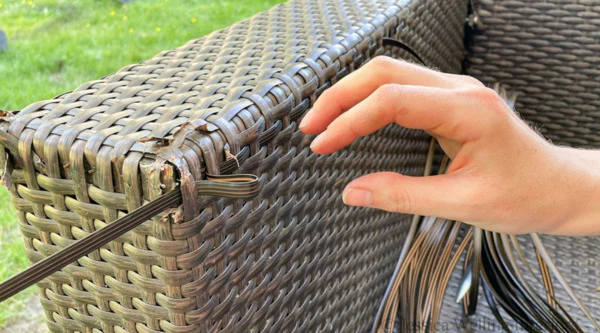
- Loose Strands: For minor damages like loose strands, use a small amount of wood glue to secure them back in place. Clamp the area until the glue dries.
- Broken Pieces: If you have broken or missing pieces of wicker, you can replace them using wicker repair kits available at hardware stores. Follow the instructions carefully to match the weave pattern.
- Painting: If the paint on your wicker furniture is chipped or faded, consider repainting it. Use outdoor spray paint designed for wicker to give it a fresh look and added protection.
Additional Tips for Repairs
- DIY Kits: Wicker repair kits come with detailed instructions and all the necessary tools. They are a cost-effective solution for minor damages.
- Professional Help: For extensive damage, consider seeking professional help. Expert restorers can match the original weave and color more accurately.
- Regular Maintenance: Regularly check for signs of wear and tear. Early detection and prompt repairs can prevent minor issues from becoming major problems.
Seasonal Care
Different seasons bring different challenges for your wicker patio furniture. Here’s how to prepare and care for your furniture throughout the year.
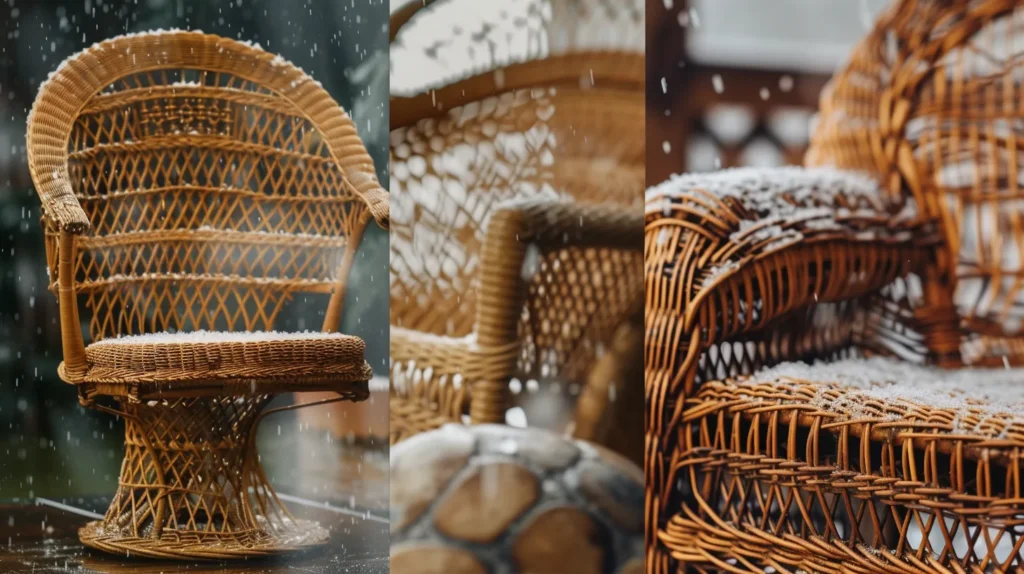
Preparing for Winter
Winter weather can be harsh on wicker furniture. Proper preparation is essential to protect it from the cold and moisture.
- Clean Thoroughly: Before storing your furniture for the winter, give it a thorough cleaning. Remove all dirt and debris to prevent mold growth during storage.
- Cover and Store: Cover your wicker furniture with breathable covers and store it in a dry, sheltered area. If possible, bring it indoors to avoid exposure to freezing temperatures.
- Inspect Regularly: Periodically check your stored furniture for any signs of damage or moisture. Address any issues immediately to prevent long-term damage.
Additional Tips for Winter Preparation
- Elevated Storage: Store your furniture on pallets or bricks to keep it off the cold ground. This prevents moisture absorption and potential damage from freezing temperatures.
- Dehumidifiers: Use dehumidifiers in storage areas to maintain a dry environment and prevent mold growth.
- Regular Airing: During milder winter days, uncover your furniture and allow it to air out. This helps in preventing stale smells and mold formation.
Best Storage Practices
Proper storage is crucial for maintaining the longevity of your wicker furniture. Follow these best practices to ensure your pieces remain in great condition.
- Elevate Furniture: If storing furniture in a garage or shed, place it on pallets or bricks to keep it off the ground. This prevents moisture absorption from the floor.
- Ventilation: Ensure that the storage area is well-ventilated to prevent mold and mildew growth. Avoid tightly sealed plastic covers that can trap moisture.
- Regular Checks: Throughout the storage period, regularly check on your furniture to ensure it remains dry and damage-free. Promptly address any issues that arise.
Additional Tips for Best Storage Practices
- Rotating Position: Occasionally rotate the position of your furniture in storage to ensure even ventilation and prevent pressure points from forming.
- Desiccant Packs: Place desiccant packs inside the storage covers to absorb excess moisture.
- Labeling: Clearly label your stored furniture and covers to make it easier to locate and identify each piece when needed.
Maintaining and cleaning your wicker patio furniture doesn’t have to be a daunting task. By following these detailed cleaning, maintenance, and seasonal care tips, you can keep your wicker pieces looking beautiful and extend their lifespan significantly. Whether you’re preparing for the winter months or just giving your furniture a routine clean, these steps will help ensure your outdoor space remains inviting and stylish.
Proper maintenance extends the life of your furniture. Check our ultimate guide for overall tips and explore our recommendations on budget-friendly sets.
FAQs
Disclosure: Our blog contains affiliate links to products. We may receive a commission for purchases made through these links. However, this does not impact our reviews and comparisons. We try our best to keep things fair and balanced, in order to help you make the best choice for you.


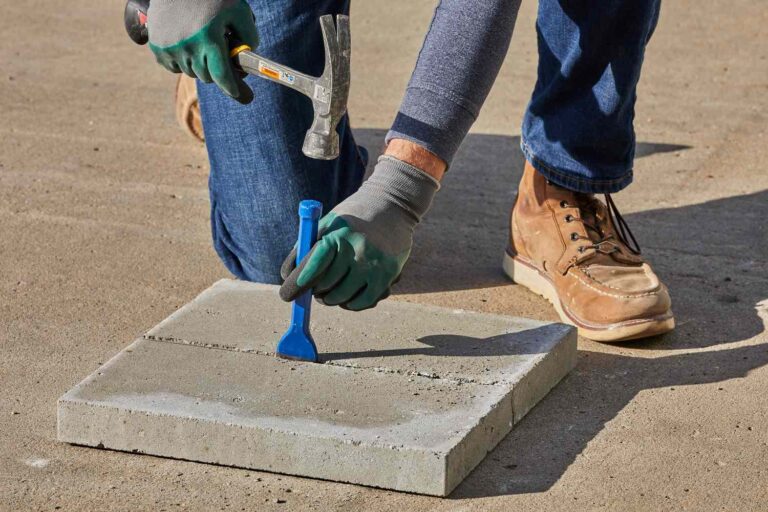
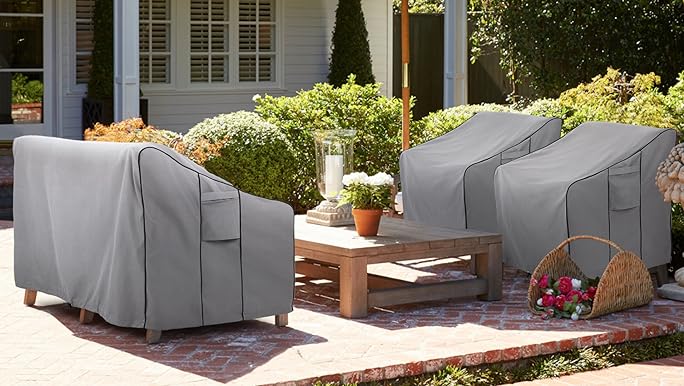



2 Comments